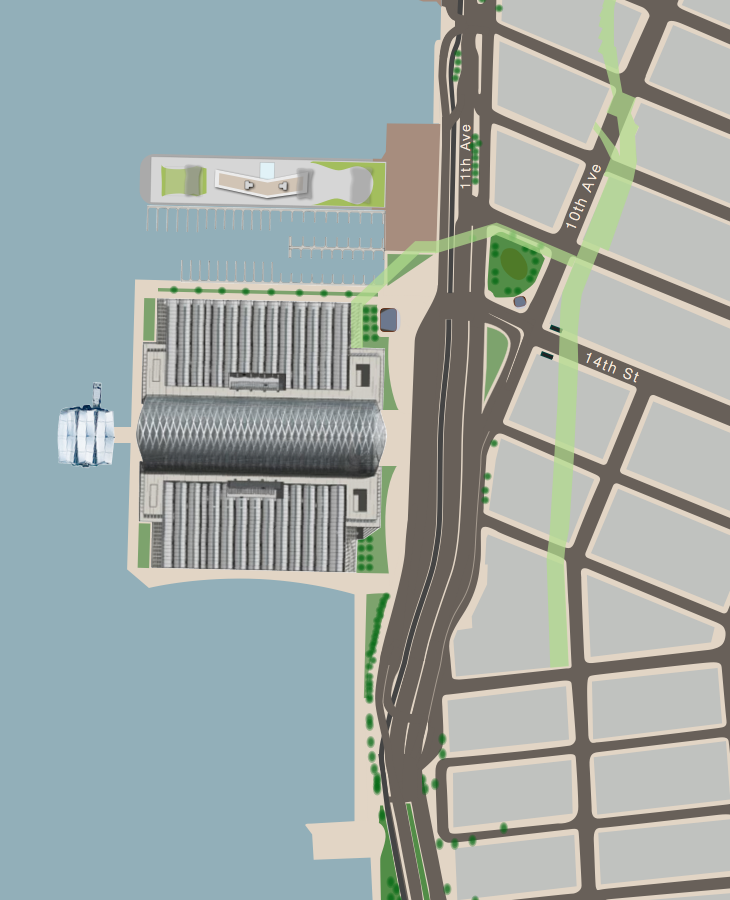Table of Contents
Download Planning for a New Northeast Corridor:

Download The Hudson Terminal Plan:

Download the Trends & Opportunities Report:

The Hudson Terminal Plan
The Hudson Terminal Plan seeks to fill several crucial gaps in the metropolitan transit landscape by linking together a number of local and regional rail lines at a new transportation hub in Manhattan. The proposal suggests constructing a new tunnel under the Hudson River to link existing NJ Transit regional and light rail tracks already traveling to Hoboken, NJ with a new train station at the intersection of 14th Street and 11th Avenue on the Hudson River. In addition to the New Jersey elements of the proposal, the Hudson Terminal Plan suggests extending the L and 7 subway lines to meet at the new rail hub in order to provide passengers with convenient transit connections at Hudson Terminal.
The Hudson Terminal Plan’s greatest benefit is in its ability to create a one-seat ride into Manhattan for a number of existing commuter and light rail lines, including NJ Transit’s Main, Bergen, Pascack Valley, Raritan Valley, and Meadowlands lines as well as Hudson-Bergen Light Rail, which currently terminate in New Jersey. The Hudson Terminal Plan also allows for the future integration of new NJ Transit lines including the West Shore commuter line as well as the Northern Branch and Bergen Passaic extensions of Hudson-Bergen Light Rail. Without a new commuter hub station in Manhattan, investments in both Penn Station Access and the expansions of NJ Transit’s commuter rail and Hudson-Bergen Light Rail systems would be unable to fully realize their potential benefits. Both the MTA’s Penn Station Access and NJ Transit’s West Shore Regional Project would increase use of the already overburdened tracks, platforms, and concourse space within Penn Station. In light of these, as well as other metropolitan transit trends, including the increase in ridership on Amtrak’s Northeast Corridor, the need for a dedicated Manhattan transit hub for NJ Transit’s commuter and light rail lines could not be more apparent. Since 2002, NJ Transit commuter rail lines and Hudson-Bergen Light rail have gained a combined 28 million new annual passengers. In contrast, MTA Metro-North and LIRR have gained 7.6 million new annual passengers over the same time period. But even as MTA LIRR continues to lose passengers, a brand new concourse and rail link is being constructed within Grand Central Terminal. Simultaneously, the Penn Station Access project seeks to add even more passengers to Penn Station. It is clear that given recent ridership trends, significant population growth in New Jersey, and a lack of one-seat trains from New Jersey to Manhattan, the Hudson Terminal Plan would be a valuable addition to the metropolitan transit landscape. Overall, the Hudson Terminal Plan provides an efficient and cost-effective means of relieving the current bottleneck of rail tracks plaguing cross-Hudson commuters in order to allow for the anticipated influx of additional passengers as the metropolitan region’s transit systems continue to expand.


